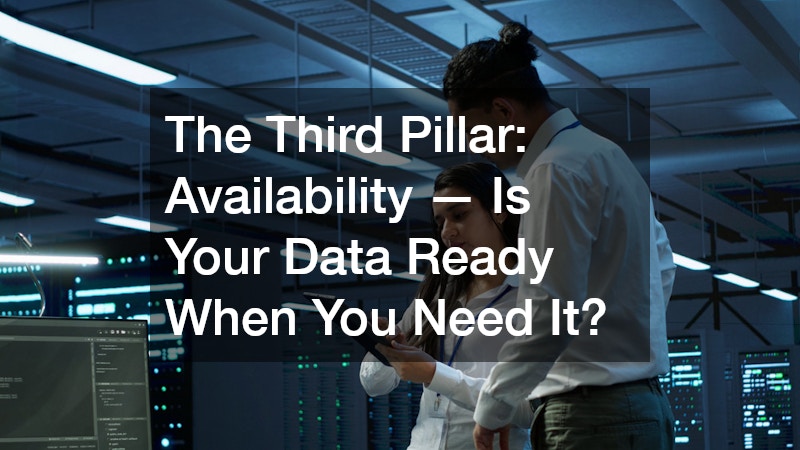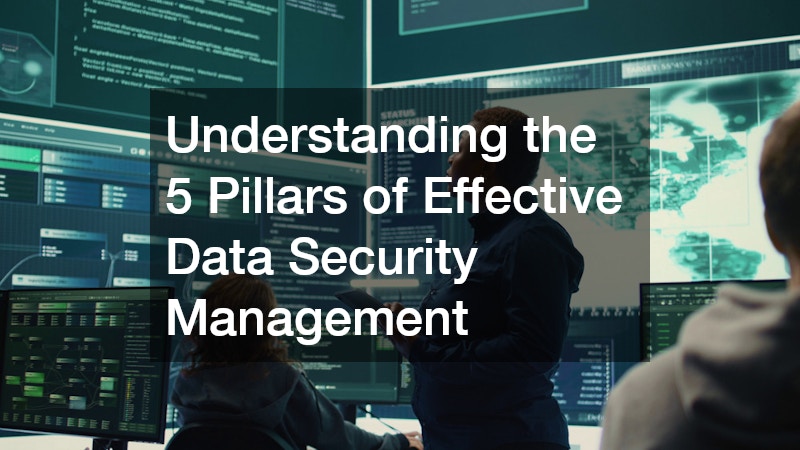Disclaimer: This website shares legal information for educational purposes only and does not constitute legal advice. Please consult a licensed attorney for advice specific to your situation.
In today’s digital era, protecting your business’s data is more important than ever. Data breaches, ransomware, and other cyber threats can disrupt operations and damage your brand reputation. But managing data security isn’t just about buying the latest software—it requires a comprehensive strategy built on fundamental principles. These core principles form the five pillars of effective data security management.
For business owners, understanding these pillars is critical to safeguarding sensitive information, maintaining customer trust, and ensuring regulatory compliance. In this article, we’ll break down each pillar and explain how you can implement them to strengthen your company’s security posture.
What Is Data Security Management and Why Does It Matter?
Before diving into the pillars, let’s clarify what data security management means. Simply put, it’s the process of protecting digital data from unauthorized access, corruption, or theft throughout its lifecycle. This involves not only technology but also policies, processes, and people.
As businesses expand digitally, data security challenges become more complex, especially with remote workforces and cloud adoption. Without a strong data security management framework, companies risk costly breaches, legal penalties, and loss of customer confidence. Therefore, adopting a structured approach to data security management is essential for sustainable business growth.
The First Pillar: Confidentiality — Who Gets to See Your Data?
Confidentiality ensures that sensitive data is accessible only to authorized individuals. Imagine you run a business with customer records, financial data, or proprietary information—if this falls into the wrong hands, the consequences could be disastrous.
Maintaining confidentiality involves:
- Access controls: Defining who can view or modify data based on roles and responsibilities.
- Encryption: Using algorithms to scramble data so it can only be read by those with the right key.
- Authentication mechanisms: Multi-factor authentication (MFA) ensures users are who they claim to be before granting access.
Why is confidentiality so important? Because once sensitive data is exposed, recovery can be costly or even impossible. For business owners, enforcing confidentiality reduces risks associated with insider threats and external attacks alike.
The Second Pillar: Integrity — How Can You Trust Your Data?
Data integrity means keeping your information accurate, consistent, and trustworthy throughout its lifecycle. Without integrity, decision-making based on data becomes unreliable, which can harm everything from customer service to regulatory compliance.
Integrity challenges often stem from:
- Accidental errors: Such as human mistakes during data entry or updates.
- Malicious tampering: Cybercriminals altering records to cause disruption or fraud.
- Software bugs: System glitches that corrupt or lose data.
To maintain integrity, implement:
- Checksums and hashes: Mathematical functions that verify data hasn’t changed unexpectedly.
- Audit trails: Logs that track who accessed or altered data and when.
- Data validation protocols: Rules to ensure data entries meet required formats and standards.
For business owners, maintaining data integrity protects against both internal mistakes and external threats, enabling reliable reporting and trustworthiness in your operations.
The Third Pillar: Availability — Is Your Data Ready When You Need It?

Even the most secure data is useless if it’s unavailable when needed. Availability means ensuring your data and systems are accessible to authorized users without undue delay.
Common causes of data unavailability include:
- System failures: Hardware crashes or software errors.
- Cyberattacks: Ransomware or Distributed Denial of Service (DDoS) attacks can lock you out.
- Natural disasters: Events like floods or fires can physically damage infrastructure.
Ensuring availability involves:
- Regular backups: Both onsite and offsite copies help restore data quickly.
- Disaster recovery planning: Preparing strategies to keep the business running during emergencies.
- Redundancy: Using multiple servers and network paths to avoid single points of failure.
Business owners should prioritize availability to minimize downtime, maintain productivity, and deliver seamless customer experiences even during crises.
How Do the 5 Pillars of Effective Data Security Management Address Data Security Challenges?
Now that we understand confidentiality, integrity, and availability, let’s explore the remaining two pillars and see how together they tackle common data security challenges.
The Fourth Pillar: Accountability — Who’s Responsible?
Accountability means clearly defining who is responsible for protecting data and ensuring compliance. Without accountability, it’s easy for security tasks to fall through the cracks, creating vulnerabilities.
This pillar involves:
- Role-based access control (RBAC): Assigning permissions based on job roles.
- Security policies and training: Educating employees on their responsibilities.
- Incident reporting and response procedures: Ensuring quick action when breaches occur.
For business owners, accountability establishes a culture of security awareness and responsibility, reducing insider threats and ensuring regulations are followed.
The Fifth Pillar: Compliance — Are You Meeting Legal and Industry Standards?

Data security management also means adhering to relevant laws and industry regulations. With increasing data security challenges, governments worldwide have enacted laws like GDPR, HIPAA, and CCPA that mandate strict protections for personal data.
Compliance requires:
- Regular audits and assessments: Verifying that security controls meet standards.
- Documentation and reporting: Keeping detailed records to demonstrate compliance.
- Data privacy practices: Managing consent and data subject rights.
Failing to comply can result in hefty fines and legal action. For business owners, staying compliant is not just about avoiding penalties—it’s about building trust with customers and partners.
Bringing It All Together: Why Every Business Owner Should Master These Pillars
Understanding the five pillars of effective data security management gives business owners a solid framework to protect their company’s most valuable asset: data. When confidentiality, integrity, availability, accountability, and compliance work together, your business stands stronger against cyber threats and operational disruptions.
Start by assessing your current data security practices against these pillars. Identify gaps, prioritize improvements, and invest in the right technologies and training. Remember, cybersecurity is a continuous journey, not a one-time fix.
By mastering these pillars, you reduce your exposure to data security challenges and build a resilient business ready for growth in 2025 and beyond.


